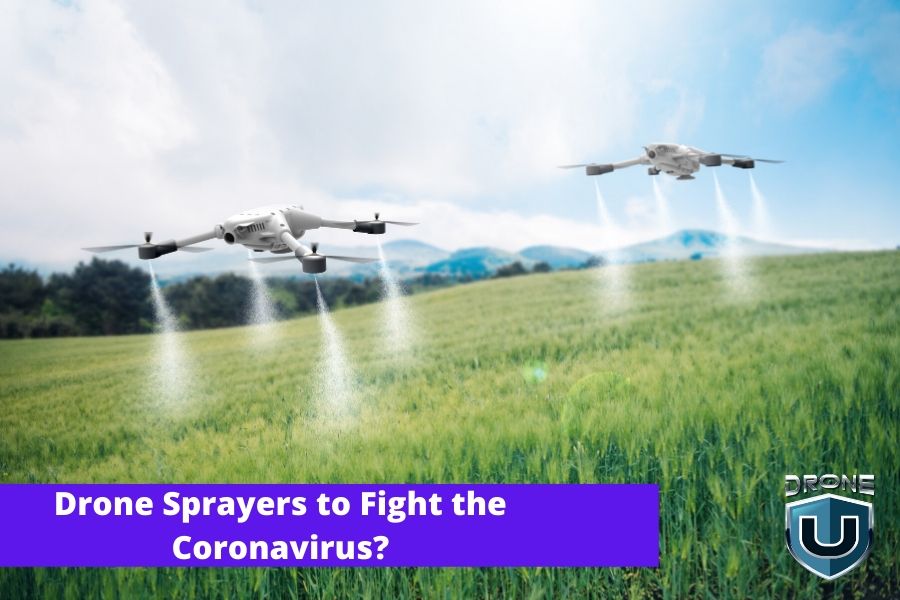
The speed with which the coronavirus has spread across the world is certainly shocking. At the time of publishing this article, total number of worldwide deaths due to Covid-19 stood at 82,000. United States is particularly badly hit. In the United States alone, this virus has infected more than 400,000 people and caused more than 12,000 deaths.
While scientists and researchers across the world are sparing no efforts to find a vaccine that can cure this deadly virus, this could take time. Meanwhile, we need to leverage technology and creativity to come up with effective ways to contain this virus.
Using drone sprayers is one such possibility. Using drone sprayers, we can treat high-risk zones with heavy footfall while greatly limiting human to human contact. Drone sprayers can be particularly useful when the lockdown is lifted and offices, schools and colleges resume.
How Countries Across the World are Using Drone Sprayers to Contain the Coronavirus
China is at the forefront when it comes to using drone spraying for disinfection. Chinese companies, DJI and XAG have disinfected more than 1500 million square meters using drone sprayers. Countries like Italy, Spain, Indonesia, Philippines and India are also putting this technology to good use.
Health-workers in Philippines used a modified DJI Agras MG-1P, an octocopter drone with a 10-liter payload for disinfecting streets and buildings. In India, plans are afoot to use fuel-powered drones that can cover 3 lakh square meters and dispense 900 liters of disinfectant in a single day.
Are Drone Sprayers More Efficient Than Traditional Spraying Methods?
Use of manned aircraft for might be possible for crop dusting in wide, open fields. But, when it comes to commercial and residential zones, traditionally disinfectant spraying can be done using ground-based rigs or backpack sprayers.
According to Chinese Investment Connections Director Robert Pearson, who has been working with Chinese company XAG, “A drone can spray 600,000 square meter a day – that’s the equivalent of 100 workers”
Robert Pearson, Chinese Investment Connections Director
Additionally, sending human personnel with backpack sprayers in infected zones is fraught with risk. And ground-based sprayers cannot access hard to reach areas and indoor spaces. Considering the above, drone spraying is surely an option worth exploring.
Which are the Most Effective Disinfectants?
Typically, a chlorine or ethyl alcohol-based disinfectant is used to treat infected surfaces. United States Environmental Protection Agency has published a list of disinfectants that are proven to be effective against SARS-CoV-2, the virus that causes COVID-19. You can access this list here.
As far as drone spraying is concerned, the use of highly concentrated disinfectant is recommended. Once ejected from the nozzle, air moisture will dilute the disinfectant before it settles down on the surface resulting in more effective disinfection.
Can You Use Ultraviolet Germicidal Irradiation (UVGI) to Treat Infected Surfaces?
Ultraviolet Germicidal Irradiation involves the use of UV-C light to treat infected surfaces. And with an ability to destroy 99.99% of bacteria, this technology is incredibly effective. However, mounting a UV-C light on a drone poses several practical challenges.
The first challenge is the heavy payload. Digital Aerolus, an autonomous technology provider is trying to develop lightweight UV-C lights which can be mounted on drones. The second and perhaps a bigger challenge is that exposure to UV-C can cause skin cancer and irreparable damage to the human eye. Because of this, use of drones mounted with UV-C lights can be dangerous, especially in public places. Scientists have proposed the use of FAR-UVC light, another kind of ultraviolet light that is not harmful to human beings. However, this technology is still in research phase and has not been deployed on field.
Do You Need Special Licensing for Drone Spraying in the United States?
Yes, you do. Apart from a Part 137 certificate, you will also need a Part 107 waiver. Additionally, you might also need to procure permission from your state officials. If you wish to learn more about this topic, check out our interview with Philip Shaner from PnC Max Enterprises. Philip’s company has years of experience serving farms and ranches with agriculture drones.
Become a Drone U Member.
Do not forget to subscribe and listen to Ask Drone U, the #1 drone podcast on iTunes!







Add Your Comment